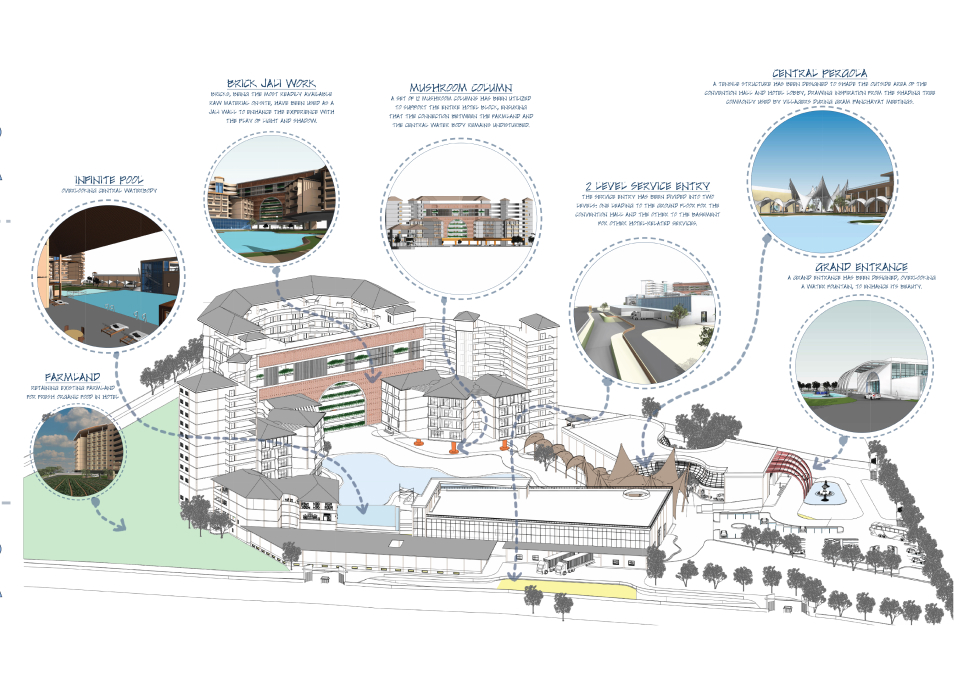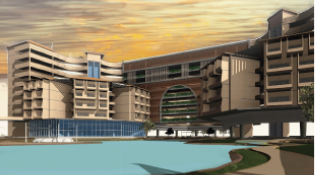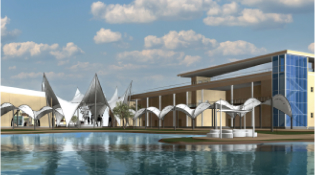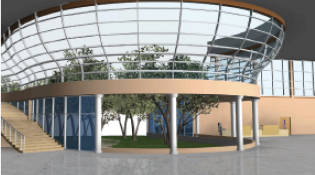
Ar. Naman Jain
B. Arch
CSI Institute Of Technology, School
Of Architecture & Planning
Secunderabad, Hyderabad
Guide
Prof. Ar. Naheema Shanahwaz
Projects
Location : Yeida, Uttar Pradesh
Site Area : 13Acres
Built up Area : 33263Sqm
Ground Coverage : 17%
The architecture thesis envisions “Green Renaissance," a 5-star hotel project merging sustainable and biophilic design with Indian cultural luxury. The term signifies a revival of Indian village life, integrating past sustainable practices into modern biophilic design. Catering to urban professionals’ desire for nature connection, the hotel provides a serene environment with green walls, natural lighting, open spaces, fresh air, and food. Beyond architecture, the project aims to inspire and revitalize by showcasing the compatibility of elegant living with eco-friendly practices. The goal is to establish a 5-star business hotel harmonizing biophilic principles with corporate social responsibility, promoting a conscious and responsible approach to design.
Thesis Statement – “A 5-star business hotel that integrates sustainable and biophilic design strategies, reviving the essence of Indian village culture to create the ‘green renaissance’ and showcasing the coexistence of luxury and environmentally friendly practices in the hospitality industry."
Discussion – Addressing challenges in 5-star hotel design involves overcoming various hurdles through thoughtful architectural solutions. The identified challenges and adopted methodologies are as follows:
1. Reviving Village Culture in a Modern Context
The challenge lies in reconnecting with the lost essence of village life amidst urban development. To counter this, the design focuses on incorporating natural elements, promoting sustainability, and fostering a sense of community within the 5-star business hotel.
2. Redefining the Built-Structure and Nature Relationship Rapid urbanization has turned cities into concrete jungles, neglecting greenery and natural habitats. The solution involves recognizing the interdependence of buildings and nature. By prioritizing green infrastructure, infusing natural elements into designs, and shifting values, a harmonious relationship between urban structures and nature can be achieved.
3. Enhancing Operational and Staff Efficiency
The challenge in busy hotel environments is the time-consuming nature of staff tasks and guest interactions. The design addresses this by optimizing backdoor services, aiming to streamline operations and boost overall efficiency.
4. Mitigating Sustainability and Environmental Impact
Many 5-star hotels contribute significantly to environmental degradation through excessive energy and resource consumption. To counter this, the design places a strong emphasis on reducing the hotel’s carbon footprint, aligning with sustainability goals and mitigating the environmental impact. These strategies collectively aim to create a 5-star hotel that not only embraces luxury but also integrates seamlessly with nature, promotes efficiency, and addresses environmental concerns.
NEXT GEN NARRATIVES



